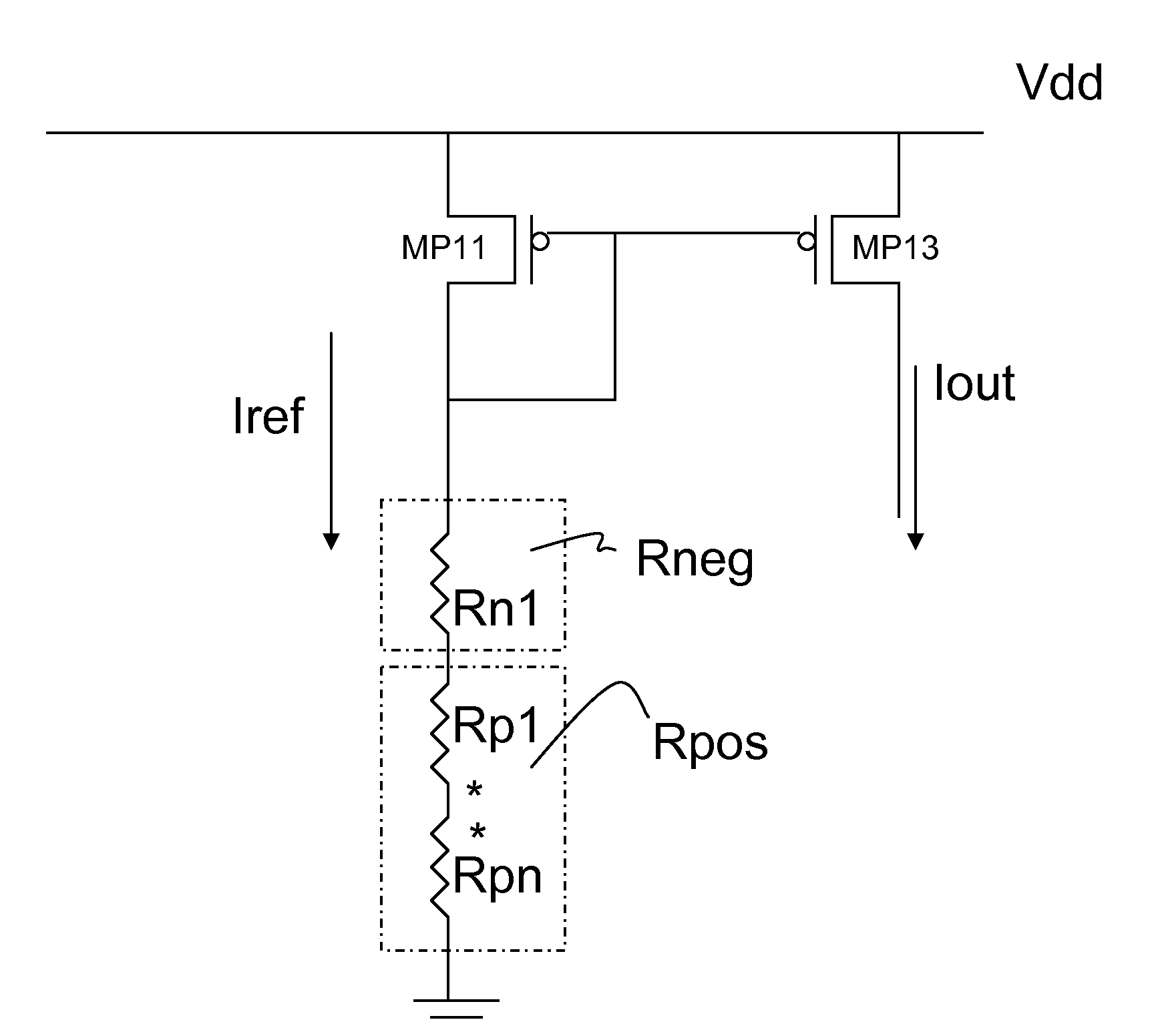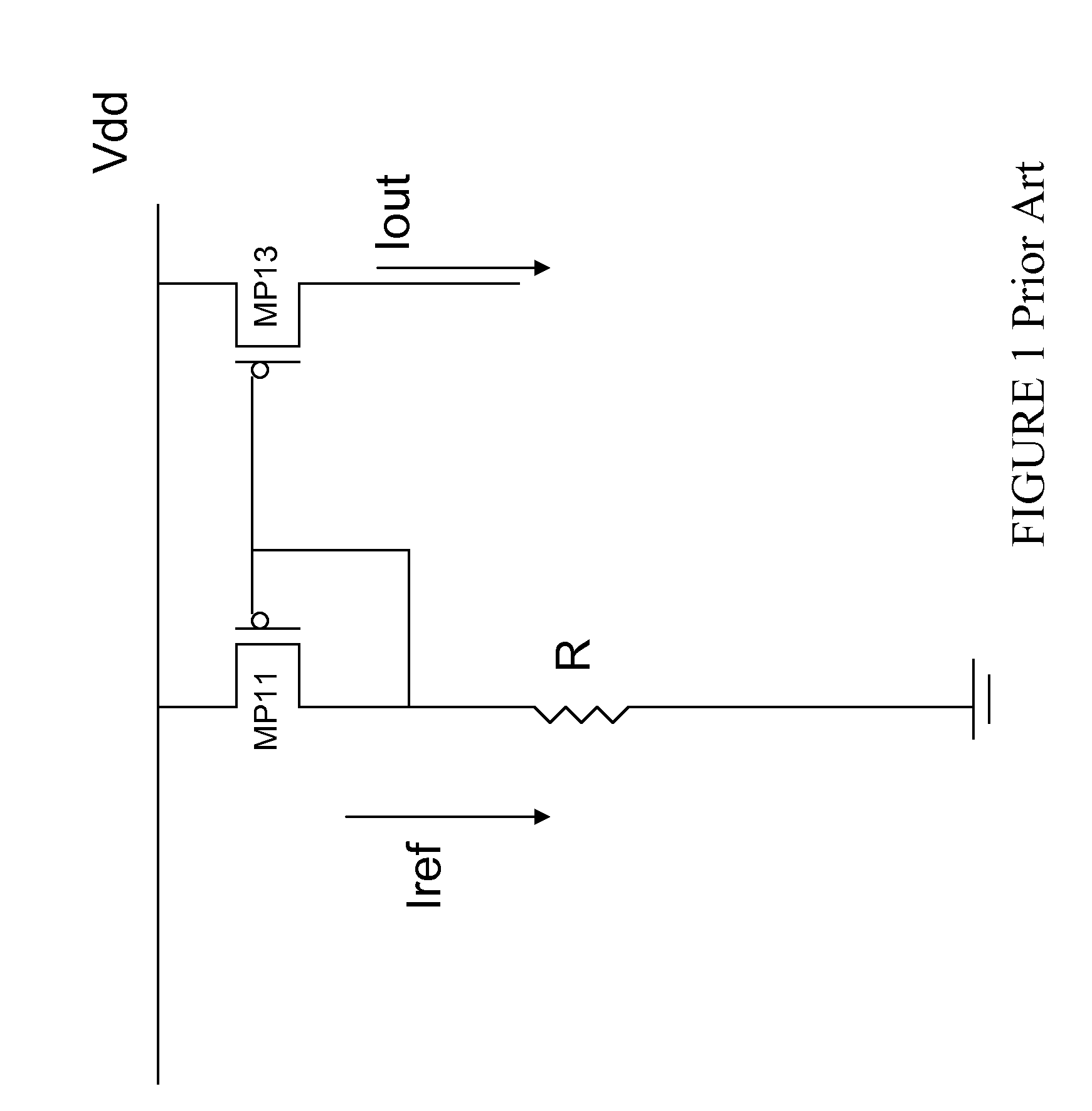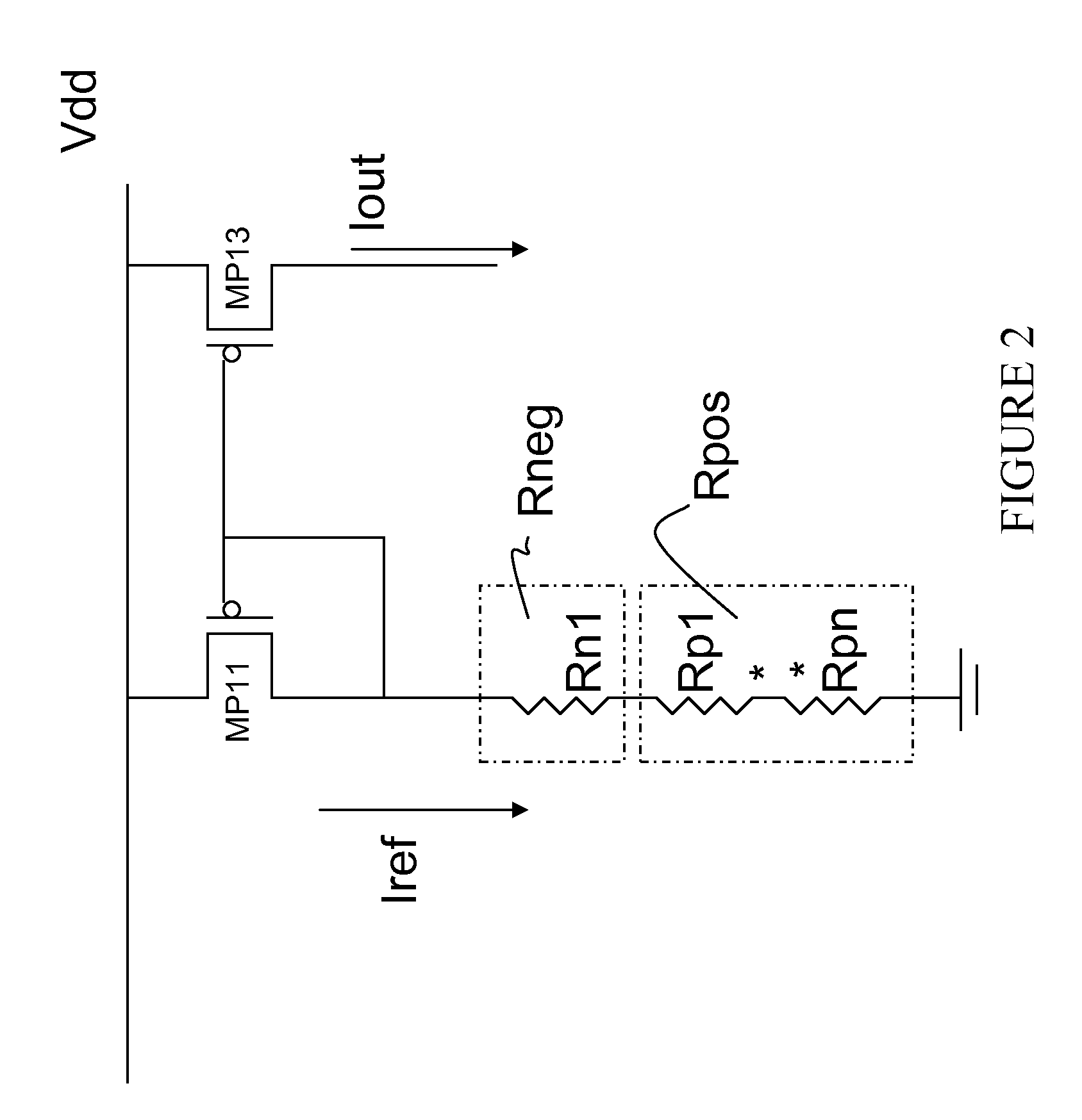Circuit and Methods for Temperature Insensitive Current Reference
a technology of reference current and circuit, applied in the direction of electric variable regulation, process and machine control, instruments, etc., can solve the problems of inpractical obtaining a temperature insensitive reference current from these known circuits, reference current still varies, etc., and achieves the effect of less current consumption and simple design
- Summary
- Abstract
- Description
- Claims
- Application Information
AI Technical Summary
Benefits of technology
Problems solved by technology
Method used
Image
Examples
Embodiment Construction
[0023]The making and using of the presently preferred embodiments are discussed in detail below. It should be appreciated, however, that the present invention provides many applicable inventive concepts that can be embodied in a wide variety of specific contexts. The specific embodiments discussed are merely illustrative of specific ways to make and use the invention, and do not limit the scope of the invention.
[0024]FIG. 2 depicts in one exemplary embodiment a block diagram of a temperature insensitive reference current circuit. In FIG. 2, P type MOSFET transistor MP11 is shown coupled to a positive voltage source Vdd. MP11 provides current to a resistor ladder formed of a negative temperature coefficient resistor Rneg and a positive temperature resistor Rpos. PMOS transistor MP13 is coupled with the gate and source terminals in common with MP11 and thus acts as a current mirror with MP11, producing an output current labeled Iout. Assuming the transistors MP11 and MP13 are matched ...
PUM
 Login to View More
Login to View More Abstract
Description
Claims
Application Information
 Login to View More
Login to View More - R&D
- Intellectual Property
- Life Sciences
- Materials
- Tech Scout
- Unparalleled Data Quality
- Higher Quality Content
- 60% Fewer Hallucinations
Browse by: Latest US Patents, China's latest patents, Technical Efficacy Thesaurus, Application Domain, Technology Topic, Popular Technical Reports.
© 2025 PatSnap. All rights reserved.Legal|Privacy policy|Modern Slavery Act Transparency Statement|Sitemap|About US| Contact US: help@patsnap.com



